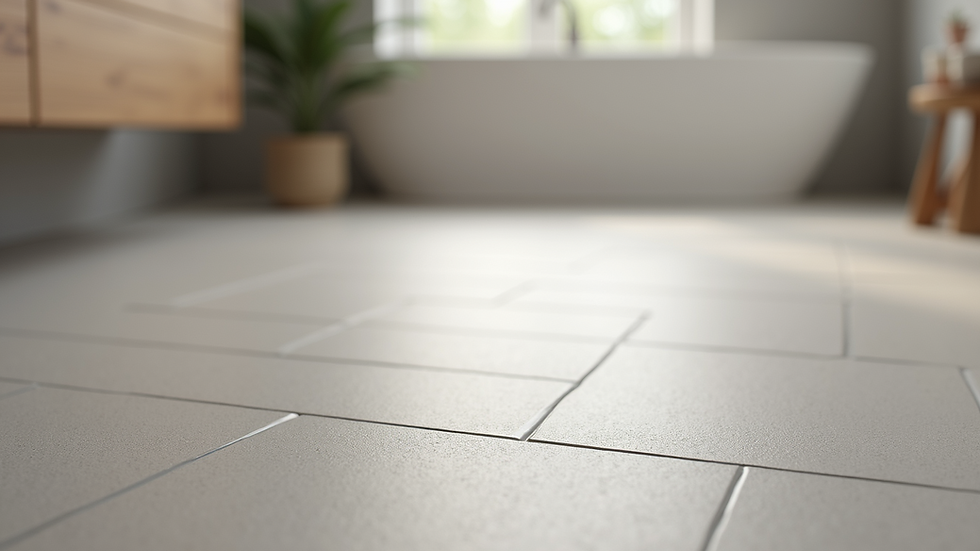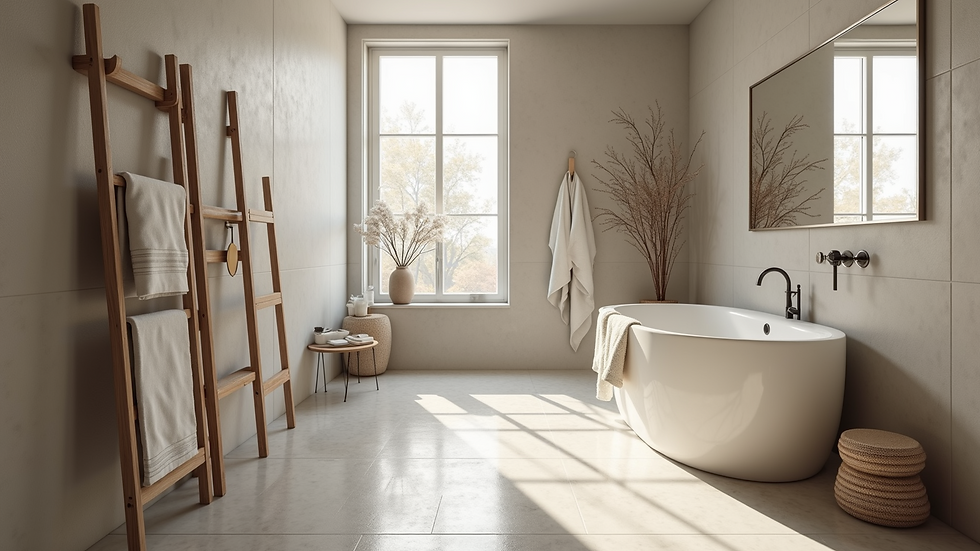Choosing the Perfect Bathroom Tiles
- James Smith
- Aug 12
- 4 min read
Selecting the right tiles for your bathroom can transform the space from ordinary to extraordinary. Tiles not only add style and personality but also provide durability and water resistance, essential for any bathroom. With so many options available, it can be overwhelming to decide which tiles will best suit your needs and preferences. This guide will walk you through the key factors to consider when choosing the best tiles for bathrooms, helping you make an informed and confident decision.
Understanding the Best Tiles for Bathrooms
When it comes to the best tiles for bathrooms, several factors come into play, including material, size, texture, and color. Each of these elements affects the overall look, feel, and functionality of your bathroom.
Tile Material
The material of the tile is crucial because it determines durability, maintenance, and water resistance. Here are some popular materials:
Ceramic Tiles: Affordable and versatile, ceramic tiles are a common choice. They are easy to clean and come in various designs.
Porcelain Tiles: Denser and less porous than ceramic, porcelain tiles are highly durable and water-resistant, making them ideal for wet areas.
Natural Stone Tiles: Materials like marble, granite, and slate offer a luxurious look but require more maintenance and sealing to prevent water damage.
Glass Tiles: These add a modern, reflective quality to bathrooms but can be slippery and fragile.
Vinyl Tiles: A budget-friendly option that is water-resistant and easy to install, though less durable than ceramic or porcelain.
Tile Size and Shape
Tile size and shape influence the perception of space and style:
Large Tiles: Create a seamless, spacious look with fewer grout lines.
Small Tiles: Offer more grip and are often used for shower floors.
Mosaic Tiles: Great for decorative accents or backsplashes.
Rectangular Tiles: Popular for creating patterns like herringbone or subway tile layouts.
Texture and Finish
Texture affects safety and aesthetics:
Glossy Finish: Reflects light and brightens the room but can be slippery.
Matte Finish: Offers a natural look and better slip resistance.
Textured Tiles: Provide grip and add visual interest, especially on floors.

Practical Tips for Choosing the Best Tiles for Bathrooms
Choosing the best tiles for bathrooms involves balancing style, function, and budget. Here are some practical tips to guide your selection:
Consider Water Resistance and Durability
Bathrooms are high-moisture environments, so select tiles that can withstand water exposure without damage. Porcelain and ceramic tiles are excellent choices due to their low porosity. Avoid materials that absorb water easily unless properly sealed.
Prioritize Safety
Slip resistance is vital, especially for bathroom floors. Look for tiles with a textured or matte finish to reduce the risk of slipping. For shower floors, smaller tiles with more grout lines provide better traction.
Match Tiles to Bathroom Size
Larger tiles can make small bathrooms appear bigger by reducing grout lines and creating a smooth surface. Conversely, smaller tiles or mosaics can add detail and interest to larger spaces.
Coordinate Colors and Patterns
Choose colors that complement your bathroom fixtures and overall design theme. Light colors can make a space feel airy and clean, while darker tones add warmth and coziness. Patterns and textures can be used to create focal points or accent walls.
Budget Wisely
Tile prices vary widely. Set a budget before shopping and consider the cost of installation and maintenance. Sometimes investing in higher-quality tiles pays off in longevity and appearance.

How to Maintain Your Bathroom Tiles
Proper maintenance keeps your bathroom tiles looking fresh and extends their lifespan. Here are some maintenance tips:
Regular Cleaning: Use mild, non-abrasive cleaners to avoid damaging the tile surface.
Grout Care: Clean grout lines regularly to prevent mold and mildew buildup. Consider sealing grout to protect it.
Avoid Harsh Chemicals: Strong acids or bleach can erode tile surfaces and grout.
Address Damage Promptly: Replace cracked or chipped tiles to prevent water seepage and further damage.
Where to Find Quality Bathroom Tiles
Finding the right source for your tiles is as important as choosing the tiles themselves. Look for suppliers that offer a wide range of styles, materials, and sizes. They should provide detailed product information and customer support to help you make the best choice.
For a comprehensive selection of high-quality bathroom tiles, consider browsing specialized retailers who focus on bathroom solutions. They often have expert advice and installation services to ensure your project runs smoothly.

Final Thoughts on Selecting the Best Tiles for Bathrooms
Choosing the perfect tiles for your bathroom is a rewarding process that combines creativity with practicality. By understanding the different materials, sizes, textures, and maintenance needs, you can select tiles that enhance your bathroom’s beauty and functionality. Remember to consider safety, durability, and style to create a space that you will enjoy for years to come. Whether you prefer classic ceramic, elegant natural stone, or modern porcelain, the right tiles will make your bathroom a true sanctuary.




Comments